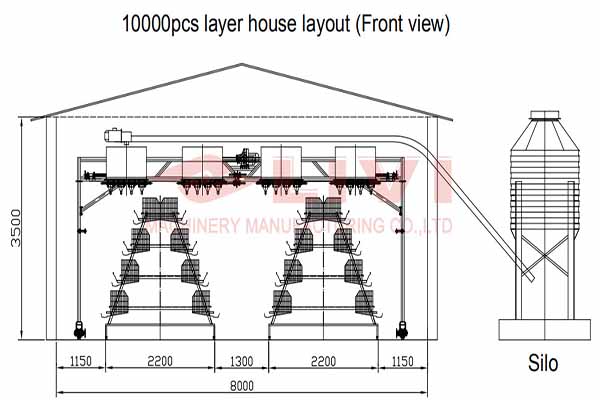Optimizing Your Chicken Cage System: From Backyard to Commercial Scale
Understanding the Differences in Chicken Cages for Backyard and Commercial Settings
When venturing into the poultry farming industry, one of the first decisions you’ll face is selecting the appropriate chicken cages. Whether you’re managing a backyard farm or scaling up to a commercial operation, the choice of chicken cages is critical. This article delves into the nuances of chicken cages suitable for both backyard and commercial settings.
Backyard Chicken Cages: The Essentials
In a backyard setting, chicken cages should be designed for ease of maintenance and compatibility with the limited space available. Here are some key factors to consider:
– Size: On average, a backyard chicken cage should be about 3 to 4 square feet per bird.
– Ventilation: Adequate ventilation ensures a healthy environment.
– Material: Galvanized steel is a durable and easy-to-clean option.
– Accessibility: Easy access for collecting eggs and managing birds.
According to the National Chicken Council, backyard chicken owners reported an average of 13.7 chickens per household in 2020.
Commercial Chicken Cages: The Scale Factor
Commercial operations require larger, more sophisticated chicken cages. Here’s what you need to keep in mind:
– Space: Commercial cages typically start at 5 to 10 square feet per bird to ensure better growth and comfort.
– Hygiene: Easy to clean materials and design are crucial for preventing disease.
– Automation: Consider incorporating automation for feeding, watering, and temperature control.
– Cost-Effectiveness: While initial costs may be higher, the long-term savings on labor and health can offset these expenses.
A study published in the Journal of Animal Science found that commercial broiler farms in the U.S. raise approximately 9 billion chickens annually.
Key Differences in Chicken Cages
– Space: Backyard cages are smaller, commercial ones are larger.
– Ventilation: Backyard cages may need more natural ventilation, while commercial ones often rely on mechanical systems.
– Material: Galvanized steel is a common choice for both, but thickness and durability may vary.
Making the Right Choice
Choosing the right chicken cage can significantly impact your poultry farming operation. Consider the following factors:
– Budget: Determine how much you can invest upfront.
– Goals: What are your primary objectives—egg production or meat?
– Space: Consider the available space and potential for expansion.
To help you visualize the differences, here is a comparison table:
| Factor | Backyard Chicken Cages | Commercial Chicken Cages |
| — | — | — |
| Size | 3-4 square feet per bird | 5-10 square feet per bird |
| Ventilation | More natural, less mechanical | Often mechanical, controlled environments |
| Material | Galvanized steel | Thicker, more durable galvanized steel |
| Cost | Lower | Higher |
| Maintenance | Easier | More complex |
Conclusion
Selecting the right chicken cage system is essential for both backyard and commercial poultry farming. By considering the specific needs and goals of your operation, you can make an informed decision that will ultimately lead to a more successful poultry farming venture.
For more information on choosing the perfect chicken cage system or to get a free design and equipment quote, please leave a comment below. Our team at Livi Mechanical is here to help you get started on your poultry farming journey.





